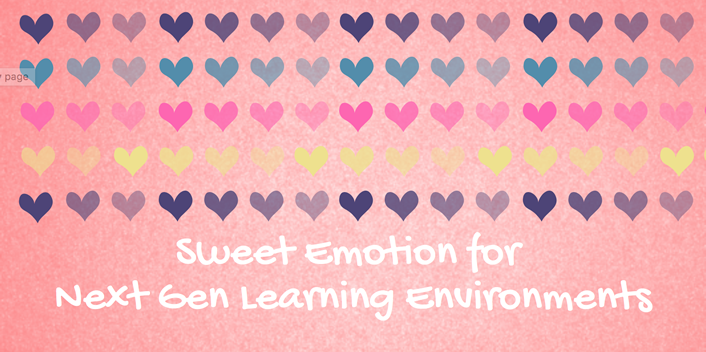
Cognitive psychologists have long studied the intense connection between emotion and learning. Specifically, the brain area known as the amygdala plays a crucial role in the neural circuitry underlying emotion, and influences what information is stored in long-term memory. Yet faculty and instructional designers often prep instructional materials without intentionally factoring in how teacher and student affective states can aid or hinder learning.
Here are nine tips for educators to ensure that happy, sad, mad, glad get to work for you and your students:
9. Read Sarah Rose Cavanagh’s The Spark of Learning: Energizing the College Classroom with the Science of Emotion West Virginia Press, 2016). The author makes cognitive psychology more easily digestible for the non-expert, reminding us that there is clear evidence for teaching techniques that tap into human emotion.
8. Make learning personal for students. Professors of yesteryear deliberately avoided explicitly helping students connect the academic discipline to their own experiences. Now, we know that such connections make for deep learning with all the benefits of long-term memory and easy access.
7. Co-design a learning game with your undergraduate or graduate students. Not sure how? Join EDUCAUSE’s Leading Academic Transformation group in midtown Manhattan as we participate in the City University of New York (CUNY) Games Festival on January 22–23, 2018. Immersive, serious fun is very “next generation.” Just ask your gamers, ehrrr, I mean, students.
6. Use case studies in your course that incorporate and portray real human feelings. Let students wrestle with how to apply academic knowledge and skills with some sensitivity to the way real people would feel in given scenarios.
5. Require that students use a range of emojis in their notes, quizzes, writing assignments, etc. This incredibly popular, digital expression of emotions should be embraced within academia as the lowest hanging  to encourage student expression. Give bonus points for emojis footnoted with compelling commentary and rationale.
to encourage student expression. Give bonus points for emojis footnoted with compelling commentary and rationale.
4. Take an Emotional Intelligence (EI) assessment. Psychologist, best-selling author, and award-winning journalist Daniel Goleman lauds these tools to help us understand our emotional strengths and social competencies, which are foundational for success and excellence (N.B. one inventory is designed especially for students at college and university level).
3. Create an economy of ‘affirmation’ badges for each course you teach. As you evaluate student performance, be sure to reward student behaviors that you have explicitly encouraged. Ideas for thematic badges are endless: peer learning and collaboration, discussion leadership/participation, interdisciplinary inquiry and research, service to community-based organizations, and so forth.
2. Model the interpersonal communication skills that have made the academy the pinnacle of civilized debate and discussion. Whatever your disciplinary field, contentious topics and issues arise during classroom discussion. Look up philosopher Kyla Ebels-Duggan’s notions of academic humility, charity, and tenacity. Every teacher and learner needs these tools — today, more than ever.
1. Tell at least one tasteful joke, or watch a silly video clip each day with your students — unrelated to the lesson or student learning outcomes of the course. Connecting through laughter contributes to forging seriously powerful bonds, which helps when the going gets tough in the learning process.
Dr. Tori Mondelli is Executive Director of the Office for Teaching Excellence & Engaged Learning at Mercy College, New York.
